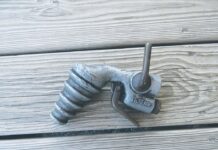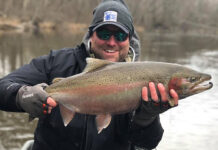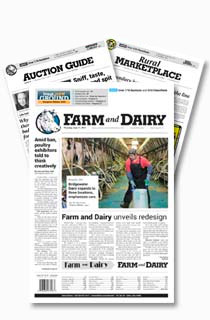As I write, it is the middle of winter, but a spring thaw is in the air and warmer weather has me thinking of things to come in April and May.
We have made much talk of drought during the past six months, and while we have found some rain in recent weeks, questions still linger about what is to come as some regions still look to recover. Water hauling continues locally and we are still waiting for a full hydrologic recharge from the deficits of last fall.
It will soon be time to start taking stock and identifying areas of the farm that need repair or improvement.
My current pulse on weather conditions is that there is a hesitancy to say we have recovered from our drought, and yet, more hesitancy to say that near-term weather will carry us out. For now, we are in a holding pattern, and today, I would give extra care to improvements that depend on moisture.
Locally, we continue to wait for the hydrology to rebound, and if we remain in a deficit, we may find ourselves into the summer drought period sooner than we want. But pasture and hayfield management behooves us to check our fields at least and see what opportunities we may be able to take advantage of to make improvements.
Renovations
Reseeding often comes to mind in pasture renovation, but there are several steps to take that might negate the need to make major changes. Before buying seed, have you addressed soil testing for pH and nutrient status? Also, have you walked your fields and attempted to score the plant density with some kind of metric?
Consider that grass and legume stands should have less than 10% bare soil visible with two or more legume plants per square foot. Have you attempted to quantify the percentage of undesirable species present? Look for at least five desirable plants in a one-square-foot area as a base to work from. Do this in 10 to 15 locations in each field.
There are several other ways to think about improvement, but I think is important that we at least try to quantify based on previously studied assessments before launching into what may be an expensive project.
The simplest solution is usually the best. Complete reestablishment of pasture is a really comprehensive process and takes some long-term thinking, so we encourage managers to be sure they are focusing on the right questions and identifying limiting factors before they begin. What simple practices can we begin to implement now?
February and early March are the best window for frost-seeding hard-coated species such as clover. Is this a simpler step that can add diversity to your stand and help reduce the amount of purchased nitrogen at a later time? This course of action is suited well for lightly impacted stands, but it does not replace corrective action to more significantly damaged sod.
The 16th edition of the “Ohio Agronomy Guide” was just released, and the 2025 “Penn State Agronomy Guide” is now available. Use these guides to find species descriptions, seeding rates, species suitability ratings, nutrient management considerations, frost seeding, weed control and more.
Natural Resources Conservation Service has a “Pasture Condition Score Sheet,” which can be used to walk out and score pastures and is a great tool to be consistent across several fields to identify the greatest need for improvement. Good fact sheets abound, and the OSU Extension also just published “Giving New Life to Tired Pastures,” which walks readers through some decision-making processes and the considerations that are involved in improving productivity.
More than ever, this may be a year to really pay attention to pH and fertility before proceeding with any other practices.
In the previously mentioned fact sheet, the authors point out that previous work in Ohio demonstrated that cow-calf days per acre can be as high as 189 days on moderate fertility grounds. But unfertilized mixed grass with no fertilizer might hold you to only 59 days. A few fertilizer basics to remember include avoiding potash application in the spring to avoid grass tetany; maintenance fertilizer applications are often well-timed after the first cutting or in the fall.
Weed pressure
Will there be more weed pressure this spring and summer because our cool-season grasses were unable to compete in the drought? This is a possibility.
Again, I try to think about the simplest approach. Summed up, the order of operations for pasture renovation is: 1.) Lime, fertilize, manage grazing; 2.) Control problem weeds; 3.) Add species to the existing sward, and 4.) Complete sward replacement. Will improving fertility bring you better yields than if you simply use an herbicide to clean up a problem? If you do not fertilize, how quickly will weeds return to a field where a sward cannot compete with the weed pressure?
Species selections in pastures
Common guidelines recommend picking a dominant cool-season grass, then one companion cool-season grass and then adding legumes. That would be a base and from there we can add other minor species.
Two species that are listed in the Ohio Agronomy Guide — and considered to have high drought tolerance — are reed canary grass and smooth bromegrass.
In the literature, smooth bromegrass appears to have greater application in Ohio.
It’s time to plan for the year ahead, but I think we need to think through the lessons learned from last year and ask ourselves, “What if the drought of 2025 follows the drought of 2024?”
What are your opportunities to increase resilience in your farm operation? That, I think, is the challenge ahead for the next couple of months.
As usual, nature may have the last word, and in the words attributed to Douglas Adams, “We demand rigidly defined areas of doubt and uncertainty.” I’ll let you know what the forecast is for this summer once we get to September.













